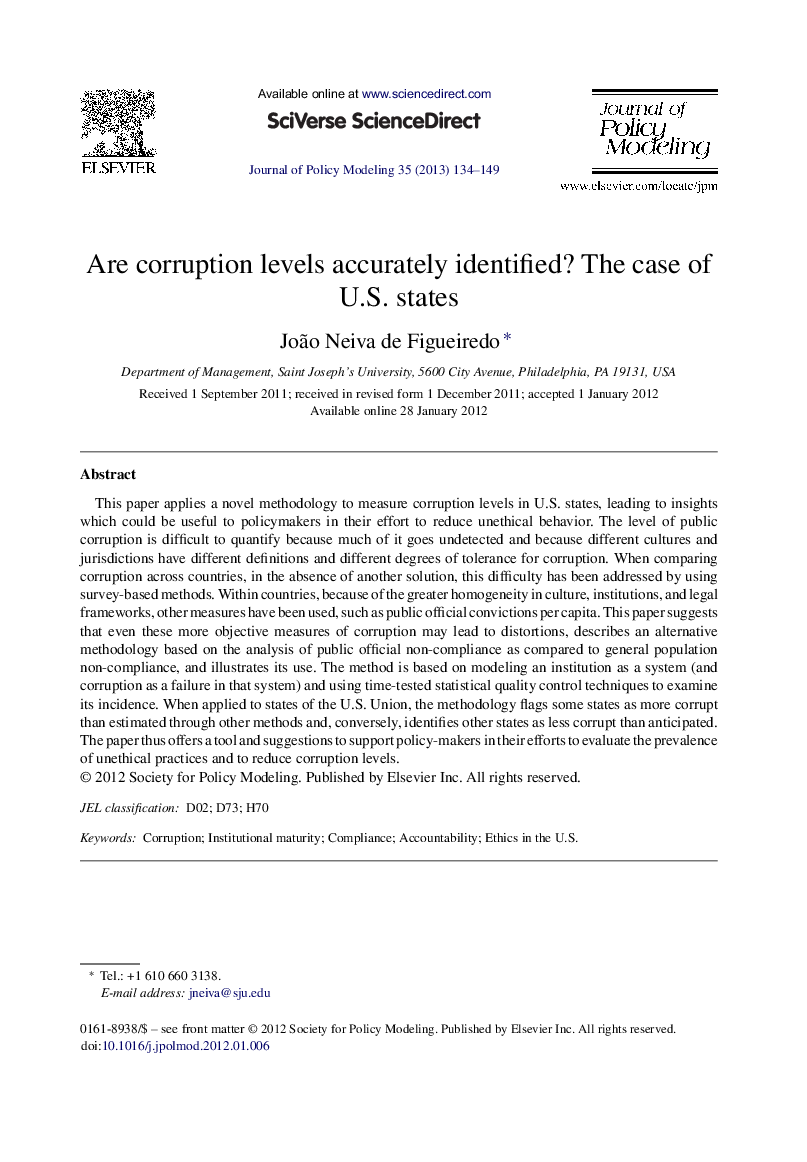| کد مقاله | کد نشریه | سال انتشار | مقاله انگلیسی | نسخه تمام متن |
|---|---|---|---|---|
| 967910 | 931419 | 2013 | 16 صفحه PDF | دانلود رایگان |
عنوان انگلیسی مقاله ISI
Are corruption levels accurately identified? The case of U.S. states
دانلود مقاله + سفارش ترجمه
دانلود مقاله ISI انگلیسی
رایگان برای ایرانیان
موضوعات مرتبط
علوم انسانی و اجتماعی
اقتصاد، اقتصادسنجی و امور مالی
اقتصاد و اقتصادسنجی
پیش نمایش صفحه اول مقاله

چکیده انگلیسی
This paper applies a novel methodology to measure corruption levels in U.S. states, leading to insights which could be useful to policymakers in their effort to reduce unethical behavior. The level of public corruption is difficult to quantify because much of it goes undetected and because different cultures and jurisdictions have different definitions and different degrees of tolerance for corruption. When comparing corruption across countries, in the absence of another solution, this difficulty has been addressed by using survey-based methods. Within countries, because of the greater homogeneity in culture, institutions, and legal frameworks, other measures have been used, such as public official convictions per capita. This paper suggests that even these more objective measures of corruption may lead to distortions, describes an alternative methodology based on the analysis of public official non-compliance as compared to general population non-compliance, and illustrates its use. The method is based on modeling an institution as a system (and corruption as a failure in that system) and using time-tested statistical quality control techniques to examine its incidence. When applied to states of the U.S. Union, the methodology flags some states as more corrupt than estimated through other methods and, conversely, identifies other states as less corrupt than anticipated. The paper thus offers a tool and suggestions to support policy-makers in their efforts to evaluate the prevalence of unethical practices and to reduce corruption levels.
ناشر
Database: Elsevier - ScienceDirect (ساینس دایرکت)
Journal: Journal of Policy Modeling - Volume 35, Issue 1, JanuaryâFebruary 2013, Pages 134-149
Journal: Journal of Policy Modeling - Volume 35, Issue 1, JanuaryâFebruary 2013, Pages 134-149
نویسندگان
João Neiva de Figueiredo,